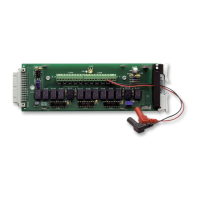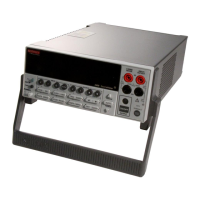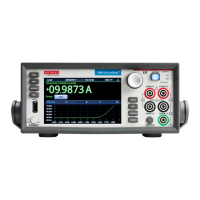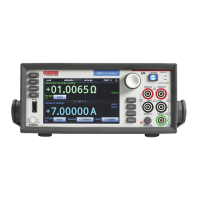3: Functions and features Model 2450 Interactive SourceMeter® Instrument
3-126 2450-901-01 Rev. B/September 2013
Coordinating overlapped operations in remote groups
All overlapped operations on all nodes in a group must have completed before the master node can
send a command to the group. If you send a command to a node in a remote group when an
overlapped operation is running on any node in that group, errors will occur.
You can execute the waitcomplete() command on the master node or group leader to wait for
overlapped operations. The action of waitcomplete() depends on the parameters specified.
If you want to wait for completion of overlapped operations for:
• All nodes in the local group: Use waitcomplete() without a parameter from the master node
or group leader.
• A specific group: Use waitcomplete(N) with a group number as the parameter from the
master node. This option is not available for group leaders.
• All nodes in the system: Use waitcomplete(0) from the master node. This option is not
available for group leaders.
For additional information, see waitcomplete() (on page 8-252).
The following code shows two examples of using the waitcomplete() command from the master
node:
-- Wait for each node in group N to complete all overlapped operations.
waitcomplete(N)
-- Wait for all groups on the TSP-Link network to complete overlapped operations.
waitcomplete(0)
A group leader can issue the waitcomplete() command to wait for the local group to complete all
overlapped operations.
The following code shows how to use the waitcomplete() command from a group leader:
-- Wait for all nodes in the local group to complete all overlapped operations.
waitcomplete()
Using the data queue for real-time communication
Nodes that are running test scripts at the same time can store data in the data queue for real-time
communication. Each instrument has an internal data queue that uses the first-in, first-out (FIFO)
structure to store data. You can use the data queue to post numeric values, strings, and tables.
Use the data queue commands to:
• Share data between test scripts running in parallel
• Access data from a remote group or a local node on a TSP-Link
®
network at any time
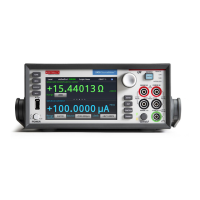
